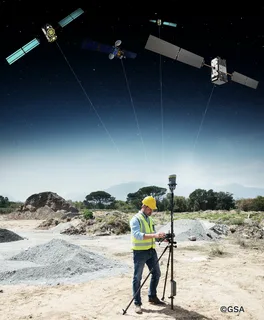In recent years, Global Navigation Satellite Systems (GNSS) have revolutionized how outdoor enthusiasts approach sports and adventure tracking. From casual hikers to professional athletes, gnss technology has become an indispensable tool, enhancing safety, performance, and the overall experience of outdoor activities.
Understanding GNSS Technology
GNSS refers to satellite-based navigation systems like GPS (United States), GLONASS (Russia), Galileo (Europe), and BeiDou (China). These systems provide precise location data anywhere on the planet, making them invaluable for outdoor navigation. Unlike traditional compass or map navigation, GNSS offers real-time positioning and tracking with remarkable accuracy.
The Role of GNSS in Outdoor Sports
Outdoor sports such as trail running, mountain biking, skiing, and kayaking require accurate route planning and real-time navigation. The role of GNSS in outdoor sports is crucial as it helps athletes track their position, speed, elevation, and distance covered.
For example, trail runners rely on GNSS-enabled devices to map complex routes and ensure they stay on course, especially in unfamiliar terrain. Similarly, mountain bikers use GNSS data to analyze their performance metrics and explore new trails confidently.
Enhancing Safety in Adventure Tracking
One of the most significant benefits of GNSS technology is improving safety during adventure tracking. When engaging in extreme activities such as mountaineering or backcountry skiing, having access to precise location information can be lifesaving.
Rescue teams often depend on GNSS coordinates sent by adventurers to locate them quickly in emergencies. Additionally, adventurers can share live tracking data with friends or family, providing peace of mind and enabling timely assistance if needed.
Integrating GNSS with Modern Devices
The advancement of GNSS technology is closely linked with the development of wearable devices, smartphones, and specialized GPS trackers. These tools make it easy for users to record routes, monitor physical activity, and share their adventures on social media.
Smartwatches and fitness bands equipped with GNSS capabilities have become popular among outdoor enthusiasts, offering detailed analytics and navigation aids in a compact form. This integration highlights the evolving role of GNSS in outdoor sports and adventure tracking, making it more accessible and user-friendly.
Conclusion
The role of GNSS in outdoor sports and adventure tracking is undeniable. It provides accurate navigation, enhances safety, and enriches the overall experience of outdoor enthusiasts. As GNSS technology continues to evolve, its applications in outdoor sports will expand, offering even more precise and reliable tools for adventure seekers around the world.

